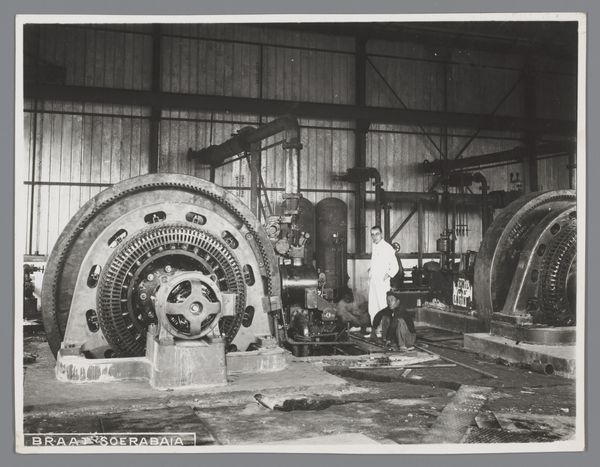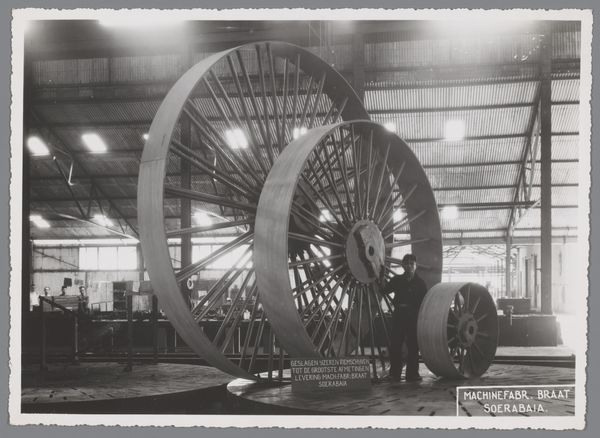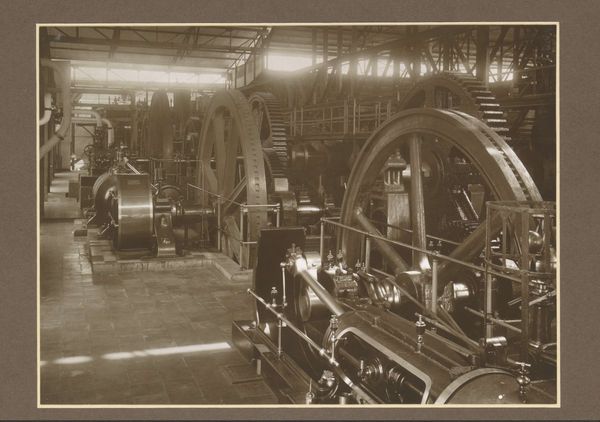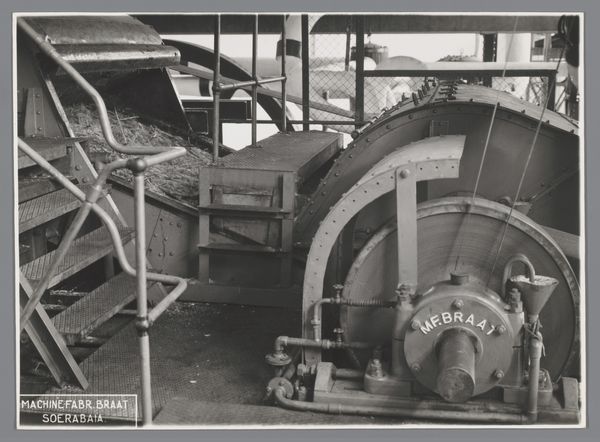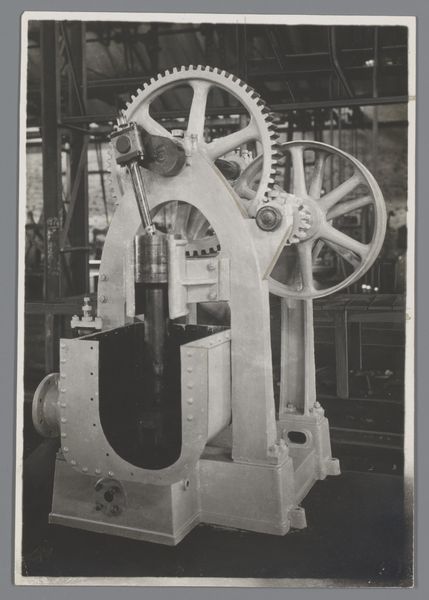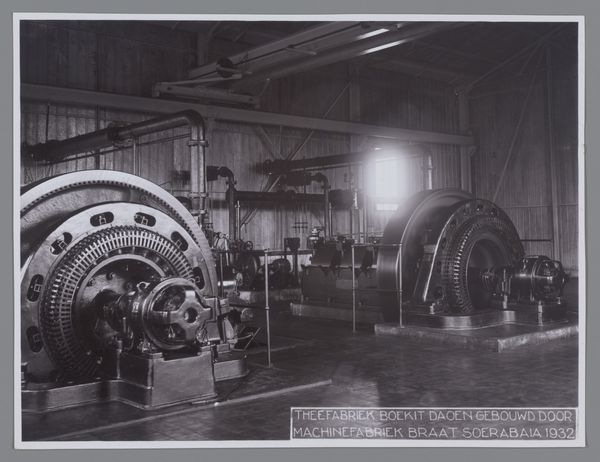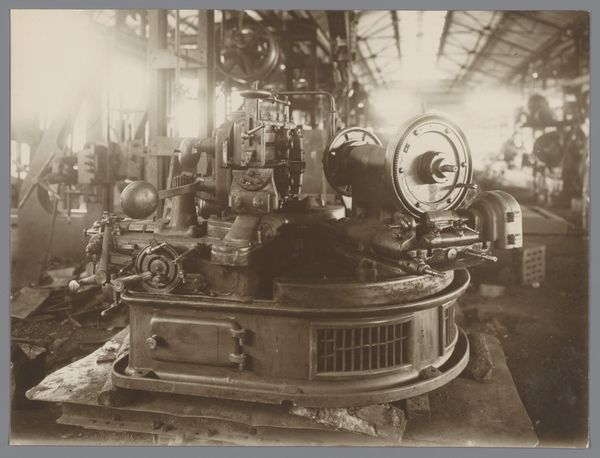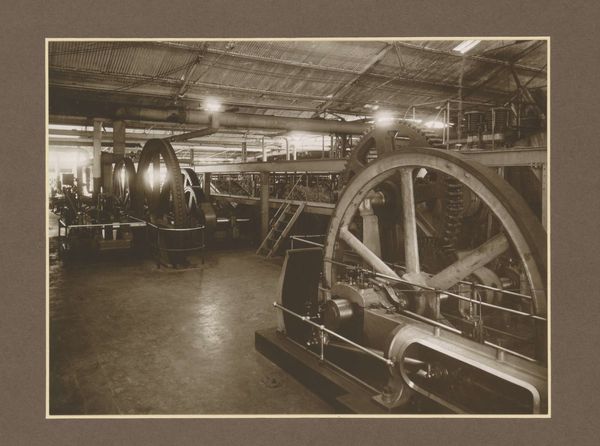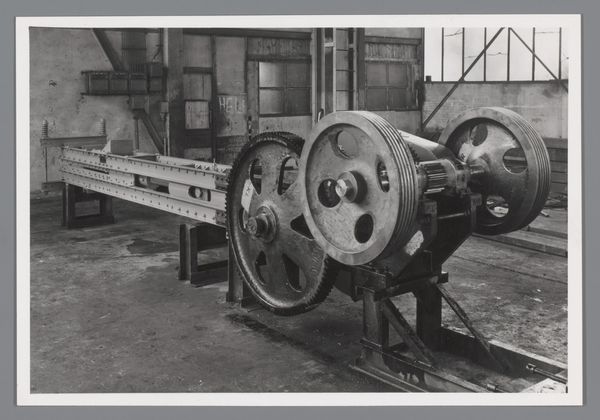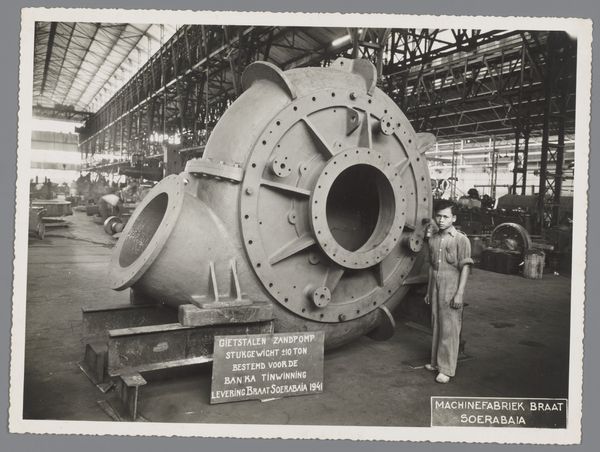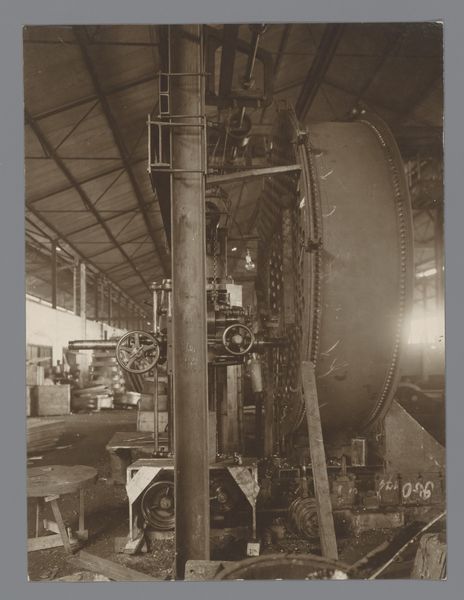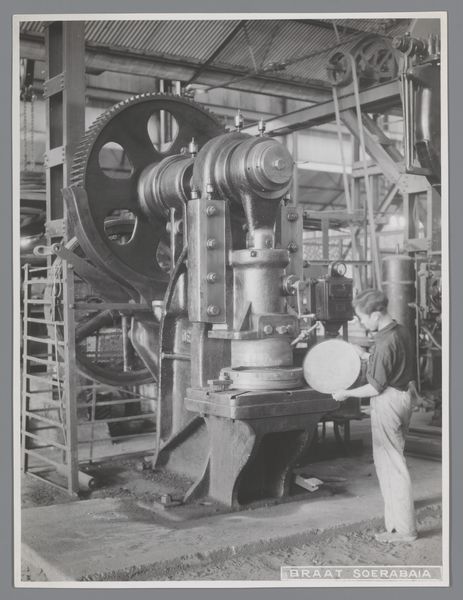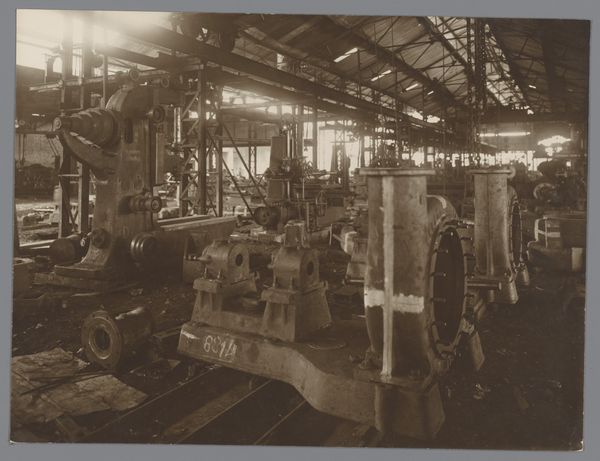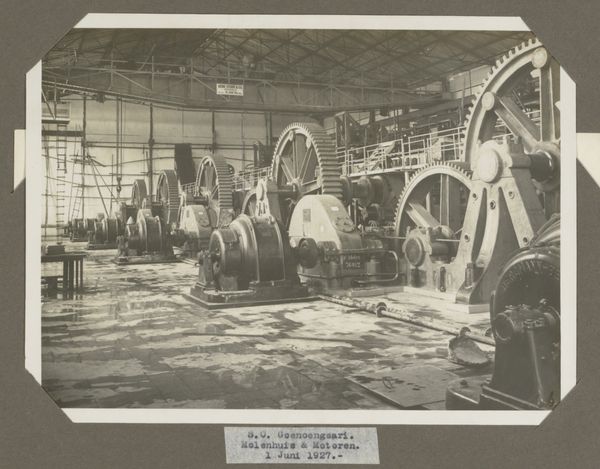
print, metal, photography
#
reduced colour palette
#
muted colour palette
# print
#
metal
#
sculpture
#
photography
#
geometric
#
modernism
Dimensions: height 168 mm, width 232 mm
Copyright: Rijks Museum: Open Domain
Curator: Right, let's talk about "Tandwiel," a photograph taken in 1926. What's your initial take? Editor: Striking. It's industrial and imposing. That enormous gear practically fills the frame. There's something stark and almost unsettling about its scale in this muted light. Curator: The photograph itself is quite a feat, particularly considering the time it was made. The Rijksmuseum possesses this metal print, an artwork that speaks volumes about the rise of industry and technology. Editor: Absolutely. The sharp geometry contrasts the more organic shapes we see in art up until that time. You see that repetition of forms in the background; that’s new! But beyond its historical significance, there is an implicit celebration of machinery, something powerful and transformative. Or perhaps it's a celebration tinged with a little anxiety? Curator: I wonder if the anonymous artist saw both the potential and the potential drawbacks of this new mechanized age? The perspective and vantage point create a deliberate awe but also…distance? This is modernism, embracing progress and reflecting upon its consequences. Editor: The composition keeps drawing my eye back to the centre. Those holes are a detail; and also, it becomes the core, both physically in the composition and conceptually to what drives the mechanism. It is all balanced beautifully within that reduced colour palette. Curator: Indeed, even the medium, metal, seems carefully selected. It amplifies the image's thematic resonance; that of permanence, precision and mass manufacturing that modern society was ushering in. Editor: Seeing "Tandwiel" now makes me question what “progress” actually meant then—or what it means today. It prompts some interesting soul-searching, which is really the ultimate role of any work of art. Curator: An apt observation. This photograph does capture a pivotal moment, not just technologically, but culturally, forcing us to reconsider our relationship with the machine, and it continues to stimulate that inquiry now.
Comments
No comments
Be the first to comment and join the conversation on the ultimate creative platform.
